The TMJ. Temporomandibular Joint (TMJ). Many of us have heard of it, and many more have not, but all of us use it daily. It is the point where our jawbone, the Mandible, meets our skull, the Temporal bone portion of the skull to be more accurate, thus making the
 Temporomandibular joint. The actual joint is found just anterior (towards the front) of our ear canal and can be felt if you gently press on the area and slowly open and close your mouth. It sounds simple enough, but the TMJ is made of more structures than initially meets the eye, and any issues with these structures could lead to pain and dysfunction during attempted use.
Temporomandibular joint. The actual joint is found just anterior (towards the front) of our ear canal and can be felt if you gently press on the area and slowly open and close your mouth. It sounds simple enough, but the TMJ is made of more structures than initially meets the eye, and any issues with these structures could lead to pain and dysfunction during attempted use.
The issues possible in the TMJ are varied in that they can be caused by any of the involved structures from muscular, skeletal, ligamentous, capsular and disc. Along with multiple structures that can be affected, dysfunction occurs from different contributing factors such as trauma, chemical imbalance, and even stress.
I bring this up as, during our productive time of isolation at home, where I was in bed watching Netflix and snacking, I had taken a bite of vegan jerky. Usually, a snack that I greatly enjoy instead, it met me with great pain. My teeth had slipped on a bite of this jerky and moved my jaw further than it should, faster than it should.

My very first thought through pain was I strained my Masseter muscle which is one of the main muscles that performs mastication (chewing movements). After some trigger point (TrP) therapy and muscle energy technique (MET), the pain had subsided slightly, and now at least, I can have a moment to think outside of extreme pain. Next was a bit of work on the lateral Pterygoid muscle. This muscle is closer responsible to the movement that I had thought caused the issue in the first place. After some fiddling inside my mouth, I had treated the active trigger points in the lateral Pterygoid, and the pain had greatly subsided but was not completely gone. I was now in a position, mentally, to break down the incident and get to the root of the issue. After some testing and more treatment, I concluded that the likely cause was a derangement of my articular disc, keeping my mouth from closing and in pain. The best treatment for the moment in my case was time. Within a week, the pain was gone, and function had returned entirely. However, if the symptoms would only worsen over the first two days, I would recommend seeing a professional.
This incident had made me wonder how often other people felt the same or similar issues. Not many are aware that there are treatment options available for TM dysfunctions or that you can perform an at-home test to check on your TMJ for some issues.
For the test, you will need to locate the TMJ and press gently with your finger where I described at the beginning of this post, that is, just to the front of your ear canal with your jaw slightly open. From here, start to open your mouth, paying mind to how the point your touching feels, your looking for either tenderness or a clicking sensation. If either occurs, you may have a TMJ dysfunction. If you came up positive, then fear not! There are some home remedies available, and I will try to list a few here.
To start;
- A hot water bottle wrapped in a warm, moist towel can help with pain and improve function. Gently hold it to your TMJ, and relief should follow soon after.
- Avoid solid foods during a flare-up! While your TMJ is in pain, don’t overload it with more pressure.
- Meditation or relaxation techniques. TMJ dysfunction can occur in your sleep! Sleeping after a stressful day without unwinding can affect you in your sleep and give you a clenched jaw throughout the night. Meditation, before you sleep, can help significantly reduce this effect.
- Concentrate on relaxing your jaw muscles. Make an effort to notice when your jaw is clenching and actively separate your top teeth from your bottom
These are at-home treatments that can help if you are experiencing issues; however, if pain persists and improvement is not seen in the first few days, it might be time to see a healthcare professional. A remedial massage therapist can assess the situation around your specific case and advise on treatment options and prescribe exercises and stretches appropriate to your case.

Your remedial massage therapist may look at some treatment options that can include Muscle Energy Technique (MET), Trigger Point release of active muscles, and even thermal therapies.
- MET – Somebody can achieve an excellent technique in that excellent results with minimal pain. This technique is more focused on neuromuscular dysfunction and does not act on the muscle directly but has been known to improve flexibility in a muscle locked due to neuromuscular spasm.
- Trigger point release is the usual go-to technique when improving muscle function. Pressure is placed on an active trigger point location to deactivate the trigger point, which in turn can reduce pain and improve muscle activation patterns.
- Thermal therapies refer to a variety of treatments to do with hot and cold. In TMJ dysfunction, a heat pack may be applied to the affected area to help reduce inflammation and increase blood flow. There is also the option of hot/cold alternating to achieve.
At the end of the day, we need our TMJ to be healthy and strong. Without it, we can’t do most of our simple, taken for granted, tasks such as eating and talking. Constant care and exercise can give it the strength to get us through its daily (and nightly (looking at you nighttime teeth grinders)) function, but sometimes we need a little extra help. A remedial massage therapist can supply that help with an in clinic visit and after you have left the clinic and are at home with your professionally prescribed exercises. Don’t take your TMJ for granted; if it’s in pain or isn’t functioning the way you feel it should, do some research and see if there is dysfunction and if there is, call your remedial massage therapist and ask for a visit. It might just save your smile.






